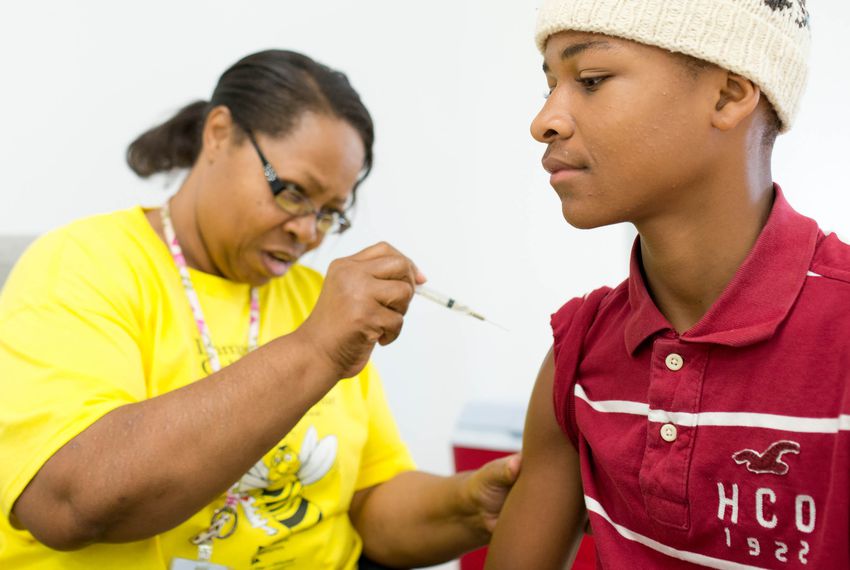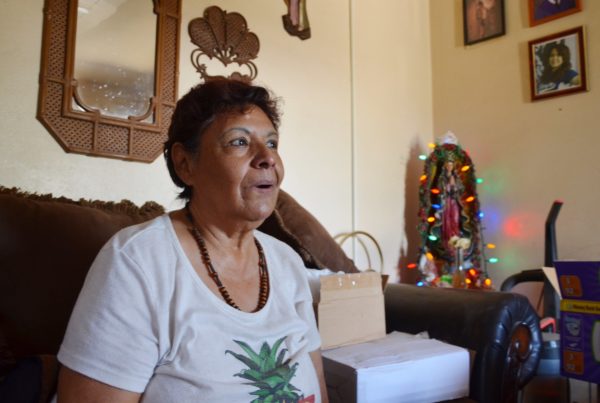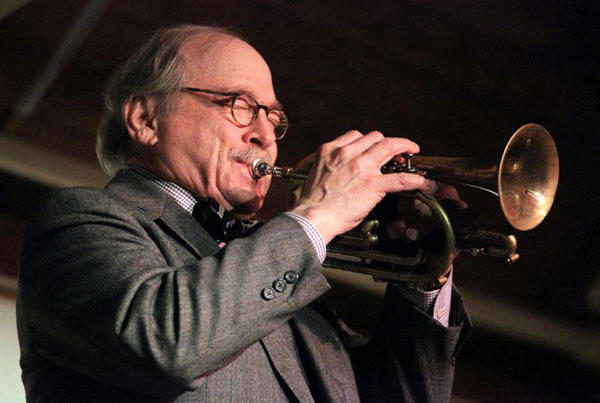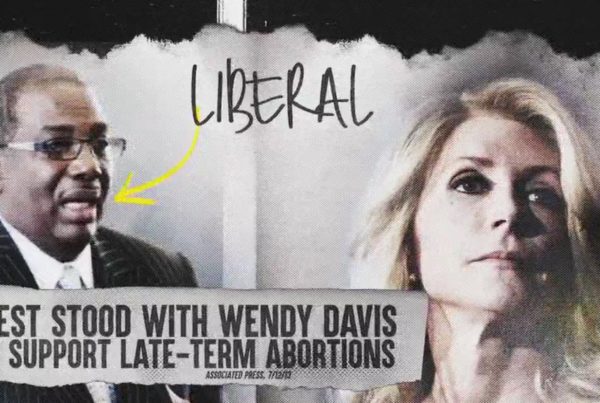From The Texas Tribune:
In 2007, two governments set into motion a massive public health experiment.
One was the state of Texas, where lawmakers rejected a mandate to vaccinate adolescent girls against human papillomavirus, or HPV, a near-ubiquitous sexually transmitted infection that causes cervical cancer. For more than a decade since, the number of Texas adolescents vaccinated against HPV has remained low.
On the other side of the globe, Australia, a country with roughly the same size population and economy as Texas, was taking a radically different approach. Public health leaders there rolled out a nationwide program that offered the HPV vaccine to girls for free at their schools. The program, though optional, proved popular, and it later expanded to boys. Vaccine coverage grew rapidly, with up to 80% of teens becoming immunized over the next decade.
Now, 12 years after Texas and Australia first veered onto wildly different courses regarding HPV prevention, their gap in health outcomes has widened demonstrably. Australia is on track to become the first country to eliminate cervical cancer, perhaps within a decade. Texas, meanwhile, has hardly made a dent in its rate of cervical cancer — which remains one of the highest in the United States, with an incidence comparable to that of some developing countries.
Medical experts in both Texas and Australia say the results underscore the effectiveness of widely available vaccines and cancer screenings.
“From the beginning, I think the [Australian] government successfully positioned the advent of HPV vaccination as a wonderful package that had a beneficial effect for the population,” says Karen Canfell, a cancer epidemiologist with the Cancer Council Australia. “It was celebrated for that reason, and it was a great public health success.”
Local cancer experts say Australia seized a golden opportunity Texas missed out on. “They embraced the vaccine at that time, and our fear kind of began around then,” says Lois Ramondetta, a professor of gynecologic oncology at MD Anderson Cancer Center in Houston. “Really, vaccination in general has just gone down the tube since then.”
Texas is at half of Australia’s vaccination rate for adolescents — and is lagging behind most other U.S. states. Only about 40% of Texans between 13 and 17 years old were up to date on their HPV vaccinations in 2017, according to the U.S. Centers for Disease Control and Prevention. That’s compared with the national average of 49%.
Cervical cancer rates remain significantly higher in Texas as well. In 2016, the age-adjusted rate of new cervical cancer cases in the state was 9.2 per 100,000 women, according to the CDC and National Cancer Institute. Women in only four other states — New Mexico, Alabama, Florida and Kentucky — were found more likely to develop cervical cancer.
Because it takes several years for persistent HPV infection to manifest as precancerous lesions on the cervix, not all of Texas’ high cancer rate can be attributed to low vaccine rates. But experts say the best way for the state to significantly reduce its cervical cancer rates is to boost HPV immunization.
Researchers in Australia estimate the country will see fewer than 4 new cases of cervical cancer per 100,000 women each year by 2028, as long as vaccination rates remain high among adolescents and adult women receive regular cancer screenings.
The success of those programs has positioned Australia as the “first country that is likely to eliminate cervical cancer as a public health issue,” researchers wrote in a study published by medical journal The Lancet late last year.
An estimated 99.7% of cervical cancer cases are caused by the group of viruses known as HPV. Cervical cancer is the fourth most commonly occurring cancer in women. Study after study has found the HPV vaccine to be safe and effective.
Some Texas policymakers say it’s time to revisit the state’s vaccination requirements in light of Australia’s success.
“This is a preventable disease, and we should and can be doing more,” says state Rep. Jessica Farrar, a Houston Democrat who has advocated for more robust HPV vaccine coverage. “Here we are 12 years later, and look where we could’ve been, but because of certain beliefs, we’re suffering from cancers that could have been avoided.”
Texas’ last effort to expand HPV vaccine coverage, supported by an unlikely cast of characters, fell wildly short.
“We did not want to be the first”
On a Friday afternoon in February 2007, just months after the U.S. government approved a vaccine to protect adolescent girls against HPV, then-Gov. Rick Perry — a Republican — stunned the political establishment by announcing an executive order: Texas would become the first state in the nation to require all 11- and 12-year-old girls entering the sixth grade to receive the vaccination. Doing so, Perry wrote, had “the potential to significantly reduce cases of cervical cancer and mitigate future medical costs.”
Public health advocates were as elated as they were surprised. Farrar, who had authored a bill that would have similarly required adolescent girls to receive the HPV vaccination, said she was caught unawares by Perry’s proclamation but quickly voiced her support for it. Kathy Miller, executive director of the left-leaning Texas Freedom Network and a veteran of the state’s long-running debate over policies regarding sexual health and education, says she was “completely shocked … but applauded [Perry] for his out-of-character decision to listen to the science and the health care experts.”
Their optimism was short-lived. Pressure from evangelical groups and members of a nascent anti-vaccine political movement to repeal the executive order mounted, while government watchdogs accused the Texas governor of being too cozy with pharmaceutical lobbyists; his former chief of staff, Mike Toomey, had gone on to become a lobbyist for Merck, the manufacturer of the Gardasil HPV vaccine.
Within weeks, Texas lawmakers revolted against Perry’s order — and with support from Democrats and Republicans, the Legislature voted overwhelmingly to torpedo the mandate.
“We did not want to be the first in offering young girls for the experiment to see if this vaccine is effective or not,” state Rep. Dennis Bonnen, the Angleton Republican who authored the bill overturning Perry’s order, told The New York Times. (Bonnen, now the Texas House Speaker, did not respond to emailed questions.)
The blowback would haunt Perry for years. When he unsuccessfully ran for president in 2011, the executive order spawned attacks from primary competitors on the right. Perry ultimately called the order a mistake, saying, “If I had to do it over again, I would have done it differently.”
Lessons from Down Under
Australian leaders took pains to avoid a mandate in their rollout of the vaccine program.
As it is in Texas, HPV vaccination for students in Australia is optional. But unlike Texas, where parents are generally expected to have their children vaccinated on their own time, Australia decided to bring the vaccine directly to the kids — by offering the shots at school.
“Relying on people to go to their pediatricians … it’s harder to reach kids that way,” says Divya Patel, an assistant professor at the University of Texas System Population Health initiative who has studied HPV vaccination in Texas.
Another reason the Australian schools-based program has been so well-received: it’s free.
“Vaccines in schools is by far the most effective way to do it,” says Ian Frazer, a professor of medicine at the University of Queensland who helped develop the HPV vaccine. “Free public health programs work really well if you publicize them well.”
Medical experts also praise Australia’s national cervical cancer screening program, which maintains a registry of people who have received cervical cancer screenings and encourages women to be tested every five years from age 25 to 74.
Australia faced some initial anti-vaccine opposition to its schools program, but an effective public awareness campaign helped overcome the opposition. Frazer, the Brisbane-based co-creator of the technology behind the HPV vaccine, was named Australian of the Year in 2006 for his research breakthrough. The same year, Janette Howard, the wife of Australia’s prime minister, disclosed that she had survived cervical cancer.
“What I think has been successful here is a pretty good public understanding of the importance of the vaccine and its key role in cancer prevention, not only for girls but also for boys,” says Canfell, the Australian epidemiologist.
The U.S. Centers for Disease Control and Prevention recommends that boys receive the HPV vaccine at age 11 or 12, but boys’ vaccination rates have lagged behind girls’. Only 36% of adolescent boys in Texas were up to date on HPV immunization in 2016, according to federal data.
In 2015, 406 Texas women died of cervical cancer, according to the Texas Department of State Health Services.
The state’s health department acknowledges the effectiveness of the HPV vaccine; a July report from the agency found that the “burden of cervical cancer can be reduced through efforts to screen all women at risk and to increase use of the HPV vaccination.”
The agency actually has the authority to implement a requirement for all students except those with a “conscientious objection” to receive an HPV vaccination before entering the sixth grade.
But a spokesperson for the agency said it typically waits for orders from state lawmakers before changing vaccine rules.
“We’ve also received clear direction from the Legislature that it wants to be involved in decisions about immunization requirements, so outside of an emergency situation, it’s unlikely we’d make a change without legislative action,” agency spokesman Chris Van Deusen said in an email. The most recent change to students’ vaccine requirements, the addition of the meningococcal disease immunization, came in 2013 after the Legislature passed a new law requiring it.
In 2017, researchers from the University of Texas System found the Lone Star State continued to have one of the lowest rates of HPV vaccine coverage in the nation.
“Despite the remarkable cancer prevention opportunity HPV vaccination provides, Texas has fallen behind the rest of the country in adopting this practice,” the researchers wrote.















